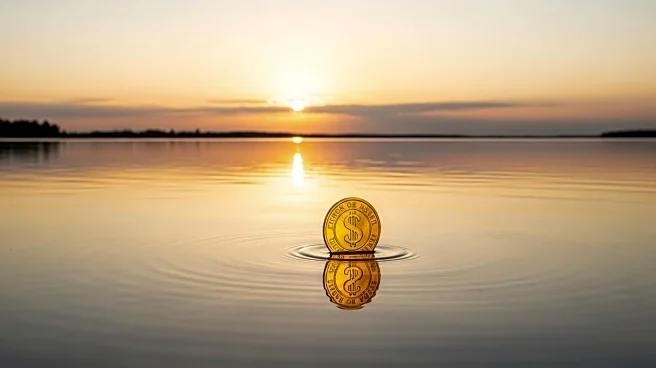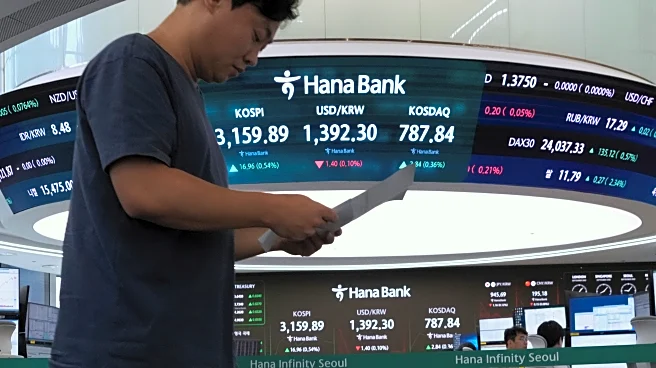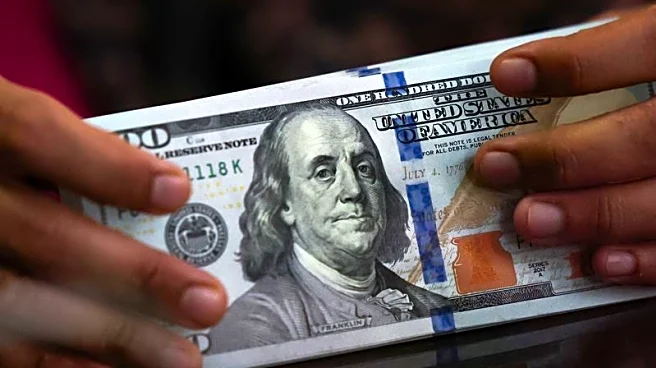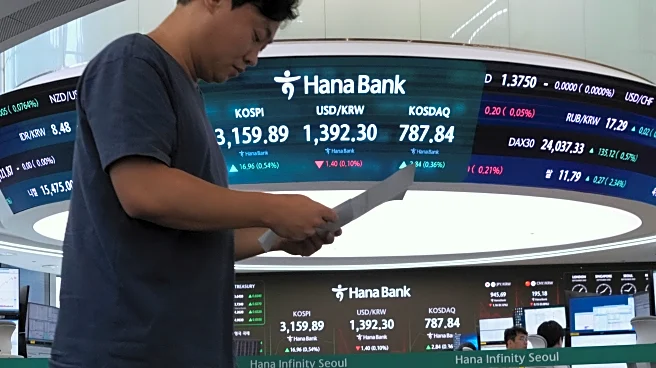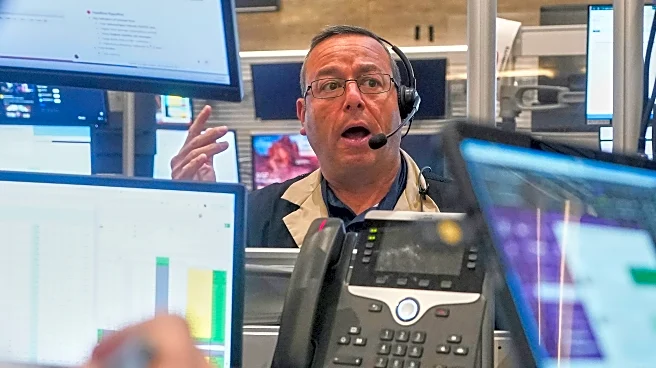What's Happening?
The price of gold has surged to a new record high, exceeding $3,500 an ounce in Asia, as investors increasingly turn to safe-haven assets amidst inflationary pressures and geopolitical uncertainties. This rise marks a significant increase in gold's value, nearly doubling since early 2023. The rally is partly driven by a weakening US dollar and central banks shifting their reserves from US treasuries to gold. Concurrently, long-term borrowing costs have risen to multi-year highs in the UK, France, and Germany, with UK 30-year government bond yields reaching a 27-year peak. This financial climate is putting pressure on UK Chancellor Rachel Reeves ahead of her autumn budget. The pound has depreciated against the dollar, and stock markets across Europe have seen declines.
Why It's Important?
The record high in gold prices reflects broader economic and geopolitical concerns that are influencing investor behavior. As central banks, including those in India, China, Turkey, and Poland, increase their gold reserves, the metal has surpassed the euro to become the second-largest reserve asset globally. This shift indicates a growing lack of confidence in US treasuries, exacerbated by US debt concerns, ratings downgrades, and geopolitical tensions. The rising gold prices could impact various sectors, including pension funds, which are seeking approval to invest in gold exchange-traded funds. Additionally, the increase in silver prices suggests a broader trend in precious metals as investors seek stability.
What's Next?
The future trajectory of gold prices will likely depend on ongoing geopolitical and economic developments. Mark Haefele of UBS Global Wealth Management predicts that gold could reach $3,700 an ounce by next June, with potential to rise to $4,000 if conditions worsen. The US Federal Reserve's upcoming decisions, particularly regarding interest rates, will be closely watched, as expectations of a rate cut have increased. The Fed's independence is under scrutiny, with President Trump's criticisms of Fed Chair Jerome Powell and actions against Fed Governor Lisa Cook. These factors could further influence investor sentiment and market dynamics.
Beyond the Headlines
The shift towards gold as a reserve asset highlights deeper concerns about the stability of traditional financial instruments like US treasuries. This trend may signal a long-term change in how countries manage their reserves, potentially affecting global financial markets. The increased demand for gold and silver also reflects broader uncertainties in the global economy, including trade tensions and geopolitical risks. As these metals gain prominence, their role in financial strategies and policies may evolve, impacting investment patterns and economic stability.
